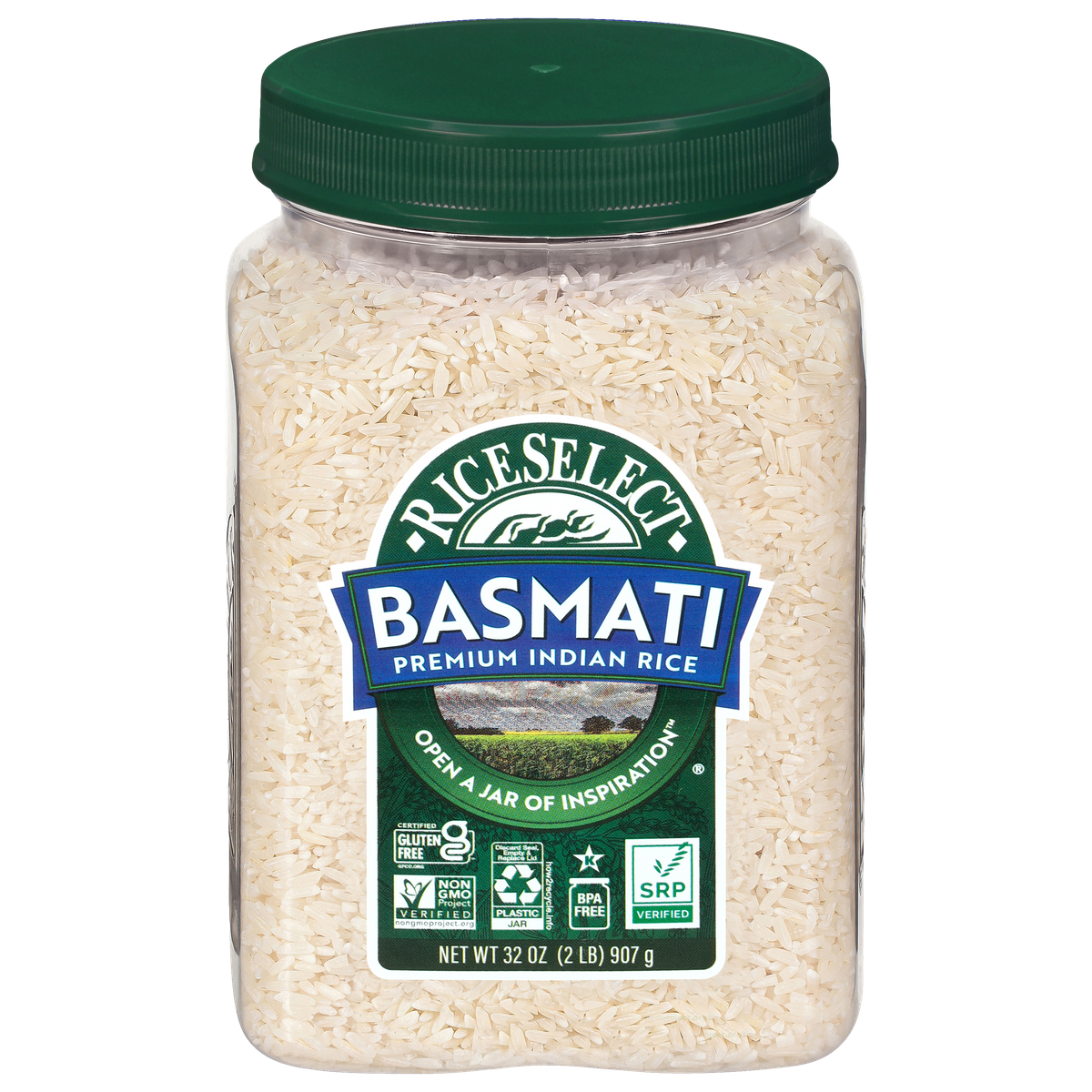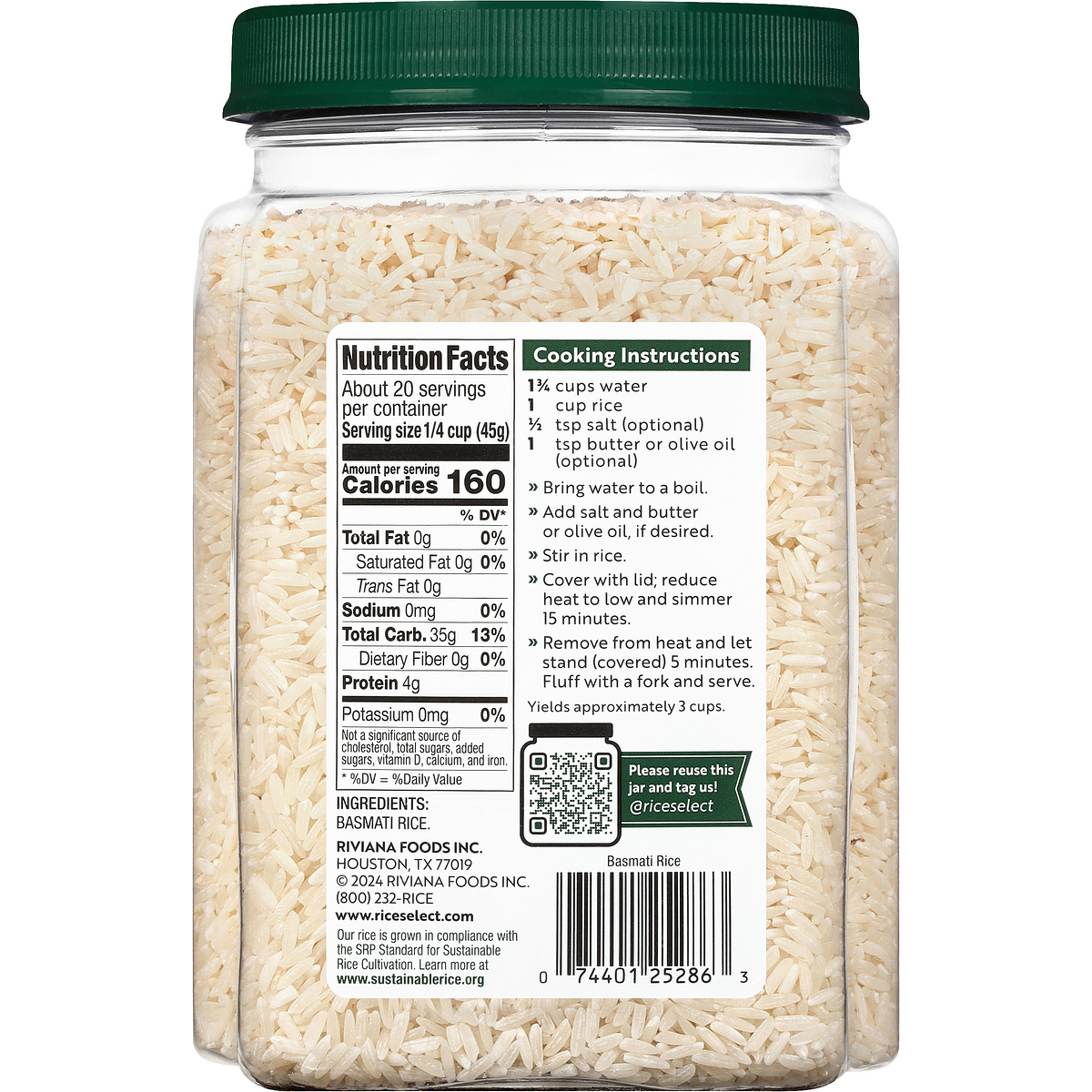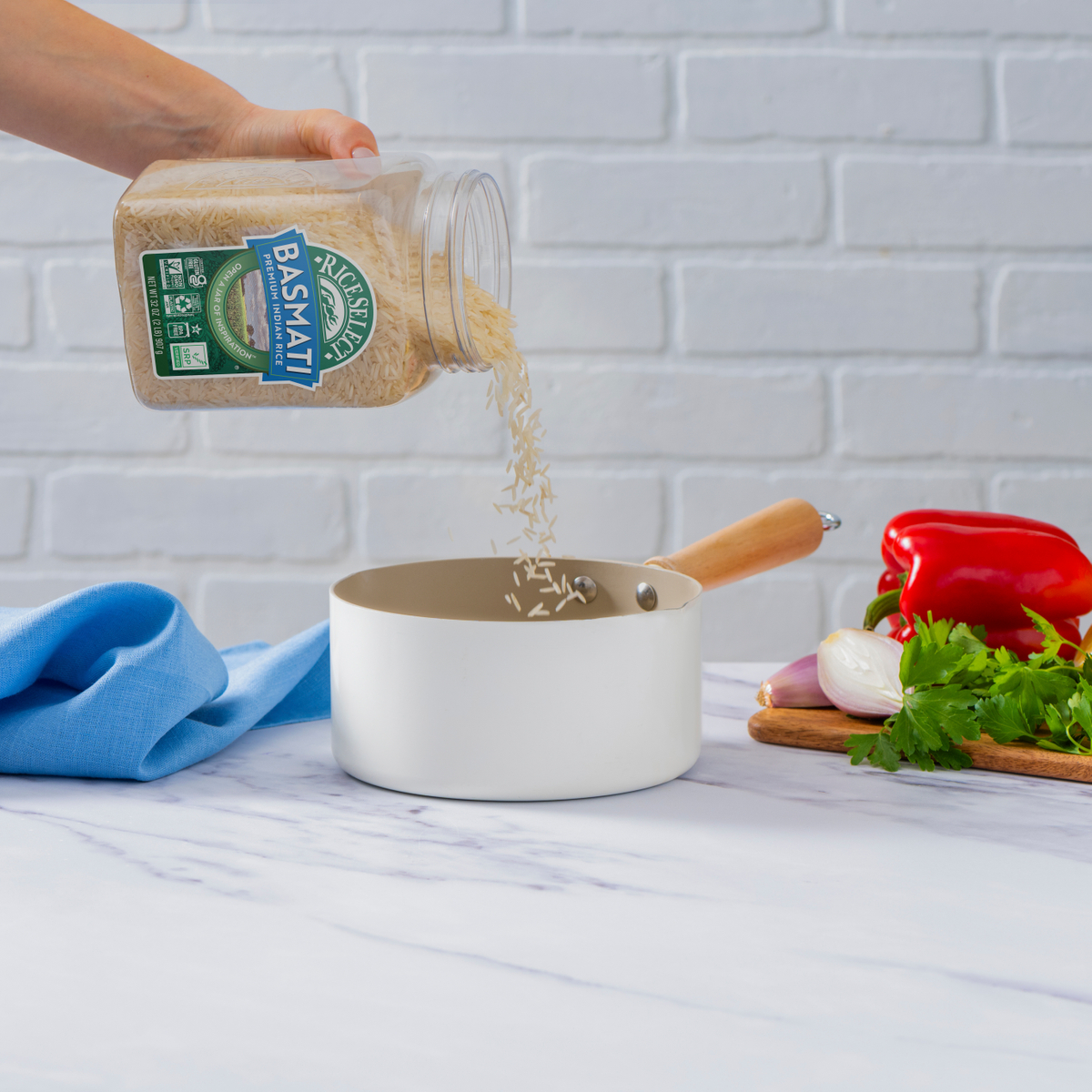RiceSelect® Premium Indian Basmati Rice
Experience Basmati rice as it’s meant to be. Authentically grown and sustainably sourced from India, RiceSelect® Premium Basmati rice is naturally aged for a signature nutty flavor, fluffy texture, and unforgettable taste.
Benefits
- Sustainably sourced rice from India*
- Cooks in just 15 minutes
- Sustainable SRP-Verified Rice, Non-GMO, Certified Gluten-Free, and Certified Kosher
- Low-fat and low-sodium
- No cholesterol, additives, or preservatives
*Meets sustainability benchmarks under the SRP Standard for Sustainable Rice Cultivation. Learn more at www.sustainablerice.org.
Where Does Basmati Rice Come from?
The origins of Basmati rice can be traced back to the Himalayas mountain range of India and Pakistan. The word “Basmati” derives from the Sanskrit word for “fragrant” and it’s no wonder why. For millennia this aromatic grain has served as the base for a wide range of dishes in Asian cuisine, from rice pilafs to curries to stews and soups. Basmati rice is famous for its floral aroma, nutty taste, and fluffy and chewy texture. Alternatively, when cooked in the oven, Basmati takes on a crispiness and enhances the texture profile of baked or roasted meals.
{{srp_basmati}}
{{h2r}}Cooking Basmati Rice – Do’s and Don’ts Cooking
| DO | DON'T |
|---|---|
|
|
|
|
|
|
|
|
|
|
|
|
|
|
Frequently Asked Questions about Basmati Rice
Basmati rice is a long grain rice variety that retains its fluffy and singular consistency when cooked. It also has a lower starch content than short and medium grain rice varieties and therefore doesn’t become sticky when cooked.
Much like other varieties of rice, this depends on the variety you’re cooking with. White Basmati is not whole grain, as the bran and germ have been removed. Brown Basmati retains the bran and germ and is as such classified as whole grain.
The simple answer is: yes, it is. Basmati rice is a great option for people who suffer from gluten intolerance, also known as Celiac disease. However, it is always important to check the package for labels to ensure that the Basmati rice you’re consuming has not been exposed to any potential cross-contact-contamination.
Basmati rice is a nutrient-rich option when consumed as part of a balanced diet. It provides a good source of carbohydrates, protein, and other nutrients. It also has a medium to low glycemic index.
When stored in a cool dry place, Basmati rice has a shelf life of up to two years. Once cooked, it can be stored for up to 7 days in the refrigerator, or up to 6 months in the freezer.
Our Premium Basmati rice is sustainably sourced from India. Our SRP-Verified grains meet the world’s first voluntary sustainability standard for rice, supporting climate-smart agriculture and protecting biodiversity. When you choose RiceSelect Premium Basmati Rice, you’re helping reduce the environmental impact of rice cultivation, supporting smallholder and women farmers, and investing in a more fair and sustainable market. Learn more at www.sustainablerice.org.
The serving size of RiceSelect Premium Basmati is ¼ cup (45g) of rice. There are about 20 servings per 32 oz jar container



